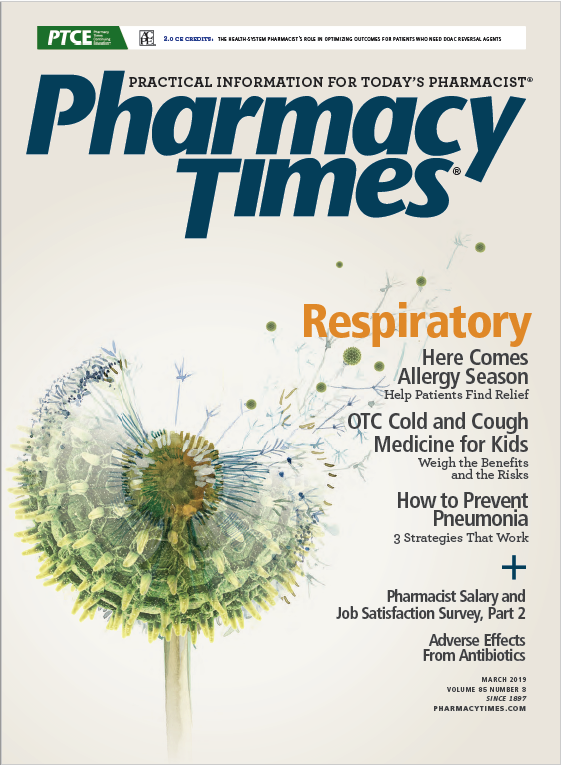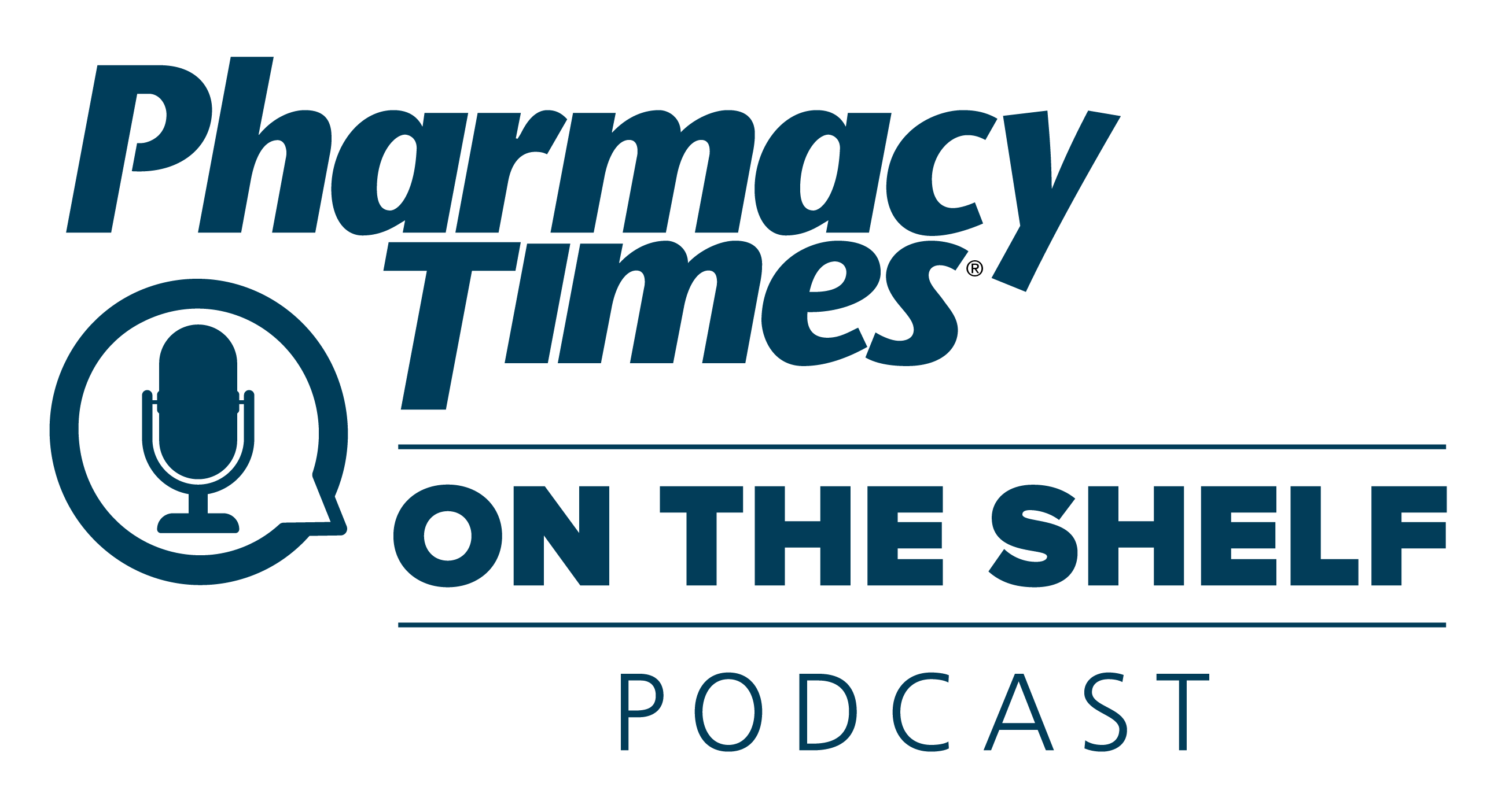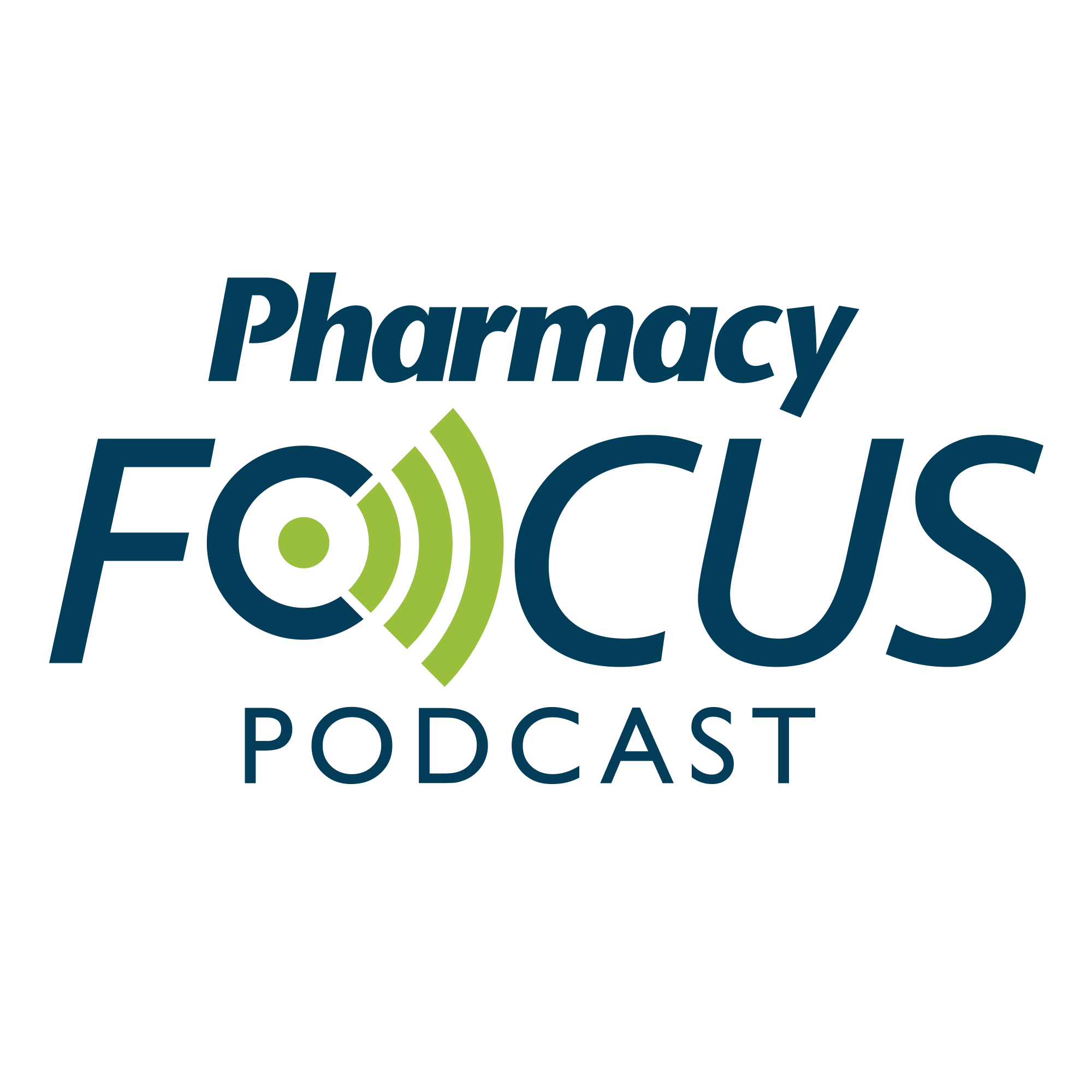Publication
Article
Pharmacy Times
Here Comes Allergy Season
Author(s):
Pharmacists can provide easily accessible and economically reasonable solutions for patients who suffer from allergies.
Allergies are the sixth-leading cause of chronic illness in the United States, resulting in an estimated annual cost of $18 billion1.
Allergies are a result of an overreaction in some individuals to allergens or substances that generally do not affect others.1 Some allergies are year-round, such as those to animal dander, cockroaches, dust mites, foods, medicines, and mold. Other allergies are seasonal and affect individuals during only certain times of the year. These seasonal allergies fall under the broad name of hay fever, aptly named after hay-cutting season.2 Hay fever is typically the result of pollen produced by plants such as grass, trees, and weeds.
These allergies occur between spring and fall, depending on the weather and the geographic location. Many who suffer from seasonal allergies have an overlap of allergies and experience symptoms throughout the season.2,3 Spring allergies often begin in February with tree pollination, followed by grass pollination in the spring and summer and, finally, weed pollination, especially of ragweed, in the late summer to early fall.3
IS IT A COLD OR ALLERGIES?
Classic symptoms of seasonal allergies include blue-colored, swollen skin under the eyes, also known as allergy shiners; a cough; fatigue; an itchy nose, roof of mouth, and/or throat; itchy, red, or watery eyes; nasal congestion; postnasal drip; and rhinorrhea and sneezing.4 Several other, less common symptoms are asthma, bronchitis, chronic fatigue, depression, difficulty concentrating, lack of endurance when exercising, sinusitis, sleep disorders, and upper respiratory tract infections.5
Pharmacists can help patients distinguish between the common cold and seasonal allergies. Although the conditions share many symptoms, the common cold presents with aches and pains and often a cough and a sore throat, which are not typical with seasonal allergies. A common cold generally lasts between 3 and 14 days, whereas seasonal allergies can last for weeks on end.6
DIAGNOSIS
Physical Exam
Primary care providers can diagnose seasonal allergies during a physical exam based on specific symptoms and their duration and timing. Knowing patients’ allergies can help providers be proactive in lessening or preventing patients’ exposure to allergens.6 The accuracy of a seasonal allergy diagnosis strictly from a physical exam rarely exceeds 50%.7
Allergy Skin Test
The most sensitive testing method is a skin test, which provides rapid results and involves pricking the skin of the patient with the extract of a specific antigen and observing the skin reactions.
Some medications can interfere with allergy skin testing results. Because different medications clear the body at different rates, most providers will request that these medications be discontinued about 10 days prior to testing. These include the asthma medication omalizumab, certain heartburn medications, OTC and prescription antihistamines, and tricyclic antidepressants.8
Serum-Specific Immunoglobulin E Antibody Testing
This test measures the level of immunoglobulin E, which acts against specific antigens, in the blood. It is less accurate and more expensive than allergy skin tests and should be reserved for situations in which allergy skin tests cannot or should not be conducted.7
TREATMENT
Prevention
Although allergens such as those in animals, drugs, and food can be avoided, that is not the case with seasonal allergies. Here are tips for dealing with sea- sonal allergies9:
- Go outdoors after a good rain, which helps reduce the pollen in the air.
- Delegate gardening chores, such as lawn mowing and weed pulling, that stir up pollen.
- Monitor mold and pollen counts. The higher the number, the more pollen there is in the air. Newspaper, radio, and television often report these counts during pollen season.
- Do not hang laundry outside to dry, as pollen can stick to clothing. Remove clothes worn outdoors, and shower to rinse pollen from the skin and hair.
- Stay indoors on dry, windy days, as that is when pollen counts soar.
- Wear a pollen mask when doing outside chores.
Medication
Antihistamines. These block the symptom-causing histamine chemical. They can help relieve itching, nasal congestion, and sneezing but have little effect on congestion. Antihistamines are available as nasal sprays, ophthalmic drops, and oral formulations.10
Cromolyn sodium. Available as a nasal spray and an ophthalmic drop, cromolyn sodium acts to prevent the release of histamine. It is most effective if started before symptoms present.10
Decongestants. These thin nasal secretions and can reduce inflammation and nasal discomfort. Nasal decongestants are available in nasal sprays and oral form. These are designed for short-term use only. Oral formulations can cause adverse reactions such as headaches, increased blood pressure, insomnia, and irritability. Decongestant nasal sprays may cause rebound congestion if used for more than 3 consecutive days.10
Immunotherapy. Available as injections and sublingual tablets, immunotherapy introduces minute amounts of an allergen into the body regularly for several years to desensitize the body to the allergen. This is designed to reduce the need for emergency measures or medication. Immunotherapy is especially effective in cases of allergy to cat dander, dust mites, and pollen produced by grass, trees, and weeds. When started at an early age, immunotherapy can help prevent the development of asthma in children.10
Leukotriene modifiers. Leukotrienes are released by the immune system, causing allergy symptoms such as a production of excess mucus. Leukotriene modifiers block leukotrienes and are especially effective in treating allergy-induced asthma. These modifiers have been linked in rare cases to adverse psychological reac- tions including agitation, aggression, depression, hallucinations, and suicidal ideation.10
Nasal ipratropium. This helps with severe nasal secretions by inhibiting nasal glands from producing excess secretions. It has no activity on nasal congestion, postnasal drip, or sneezing. Ipratropium is not recommended for patients with glaucoma or men with enlarged prostates.10
Oral corticosteroids. Corticosteroids are used occasionally to treat severe allergic reactions. These can decrease inflammation, open tightened airways, and relieve other symptoms. Severe adverse reactions may occur with long-term use, so short bursts of therapy are usually recommended. These adverse reactions include cataracts, muscle weakness, and osteoporosis.10
Steroid nasal sprays. These help prevent and treat inflammation, itching, and nasal discharge commonly caused by seasonal allergies. Some nasal sprays couple an antihistamine with the steroid to improve efficacy.10
ALTERNATIVES
Sinus rinses. Rinsing sinuses with distilled, sterile saline is an effective, fast, and inexpensive way to flush out allergens and mucus. These are available as OTC premade solutions and can be made at home.10
Quercetin. This antioxidant is commonly found in apples, grapefruit, okra, onions, and red wine. It is also available in supplement form. Several studies have demonstrated quercetin to be a naturally occurring antihistamine.11
Bromelain. This is available in supplement form and commonly found in pineapple. Results from some studies have suggested that bromelain is effective in treating respiratory distress and inflammation related to allergies.11
Vitamin C. This acts by blocking the formation of histamine. It is best taken with bioflavonoids for maximal effect. Vitamin C is found in many foods and is also available in supplement form.11
CONCLUSION
Pharmacists can provide easily accessible and economically rea- sonable solutions for patients suffering from seasonal allergies. Allergy relief may require a combination of products, so follow up with patients when possible to make sure they are getting the relief they need.®
Kathleen Kenny, PharmD, RPh, has more than 25 years of experience as a community pharmacist and is a freelance clinical medical writer based in Colorado Springs, Colorado.
References
- US Department of Health & Human Services. Allergies. CDC website. cdc.gov/healthcommunication/toolstemplates/entertainmented/tips/Allergies.html. Updated September 15, 2017. Accessed January 20, 2019.
- Seasonal allergies: symptoms, causes and treatments. HealthLine website. healthline.com/health/allergies/seasonal-allergies. Updated May 7, 2018. Accessed January 20, 2019.
- Seasonal allergies. American College of Allergy, Asthma & Immunology website. acaai.org/allergies/seasonal-allergies. Updated December 28, 2017. Accessed January 20, 2019.
- Mayo Clinic. Hay fever. mayoclinic.org/diseases-conditions/hay-fever/symptoms-causes/syc-20373039. Published August 1, 2018. Accessed January 20, 2019.
- Pedowitz R. 9 seasonal allergy symptoms you may be overlooking. Everyday Health. Updated May 5, 2015. everydayhealth.com/columns/health-answers/seasonal-allergy-signs-you-may-be-overlooking/. Accessed January 20, 2019.
- National Institutes of Health and Friends of the National Library of Medicine. Is it a cold or an allergy? NIH MedlinePluswebsite. medlineplus.gov/magazine/issues/summer11/articles/summer11pg20.html. Accessed January 20, 2019.
- Siles RI, Hsieh FH. Allergy blood testing: A practical guide for clinicians. Cleve Clin J Med. 2011;78(9):585-592. doi: 10.3949/ccjm.78a.11023.
- Mayo Clinic. Allergy skin tests. mayoclinic.org/tests-procedures/allergy-tests/about/pac-20392895. Accessed January 21, 2019.
- Mayo Clinic. Seasonal allergies: Nip them in the bud. mayoclinic.org/diseases-conditions/hay-fever/in-depth/seasonal-allergies/art-20048343. Accessed January 21, 2019.
- Mayo Clinic. Hay fever. mayoclinic.org/diseases-conditions/hay-fever/diagnosis-treatment/drc-20373045. Accessed January 21, 2019.
- The 4 Best Natural Antihistamines. HealthLine website. https://www.healthline.com/health/allergies/best-natural-antihistamines. Accessed January 22, 2019.


FDA Approves Dupilumab, Marking First Targeted Therapy in a Decade for Chronic Spontaneous Urticaria





